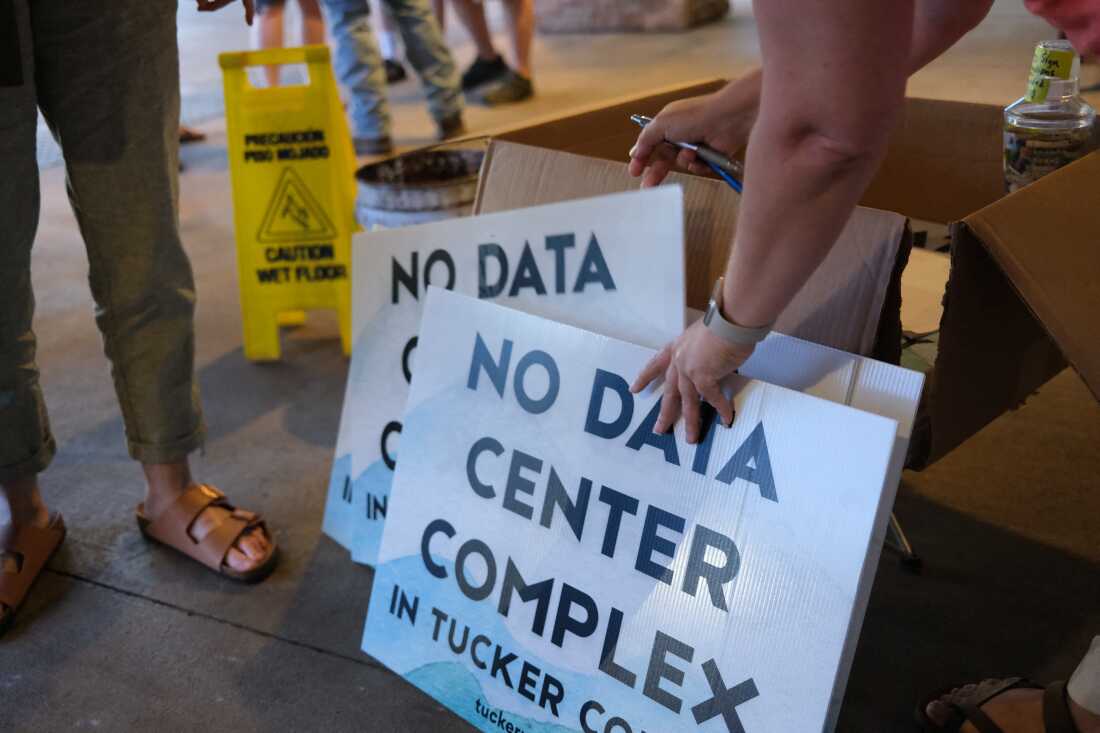
Volunteers hand out yard signs in June against a data center complex in West Virginia.
Ulysse Bellier/AFP via Getty Images
hide caption
toggle caption
Ulysse Bellier/AFP via Getty Images
Google recently courted the township of Franklin, Ind., so that it could construct a giant campus to house the computer hardware that powers its internet business. But the company needed to rezone more than 450 acres in the Indianapolis suburb, and residents weren’t having it.
Many were concerned the facility would consume huge amounts of water and electricity while delivering few local benefits. When a lawyer representing Google confirmed at a September public meeting that the company was pulling its data center proposal, cheers erupted from sign-waving residents.
Similar fights are happening around the United States. On one side are companies pouring billions of dollars into data centers, which increasingly are being built to support artificial intelligence models that promise to transform how people live and work. On the other side are residents who worry the construction spree will have dire consequences for the environment, power prices and surrounding communities.
How tech companies and government officials handle those concerns will shape the industry’s future in the U.S. and the country’s competitiveness, according to analysts and academics who track the AI industry.
Local opposition “slowing down the development of the industry or distributing it in sort of weird regional patterns is probably the most overlooked potential outcome in this conversation,” says Joseph Majkut, director of the energy security and climate change program at the Center for Strategic and International Studies.
Here’s what you need to know about the data center and AI boom — and what’s at stake.

A construction crew works on a CloudHQ data center in 2024 in Northern Virginia.
Nathan Howard/Getty Images
hide caption
toggle caption
Nathan Howard/Getty Images
What are data centers?
Data centers are big buildings that house computer hardware to store and process digital information. They essentially function as the backbone of the internet. Some of the largest cover more than a million square feet — the size of more than 17 football fields.
When you read this story, or send an email or transfer money from your bank…
Read More: America’s AI industry faces big energy and environmental risks : NPR



